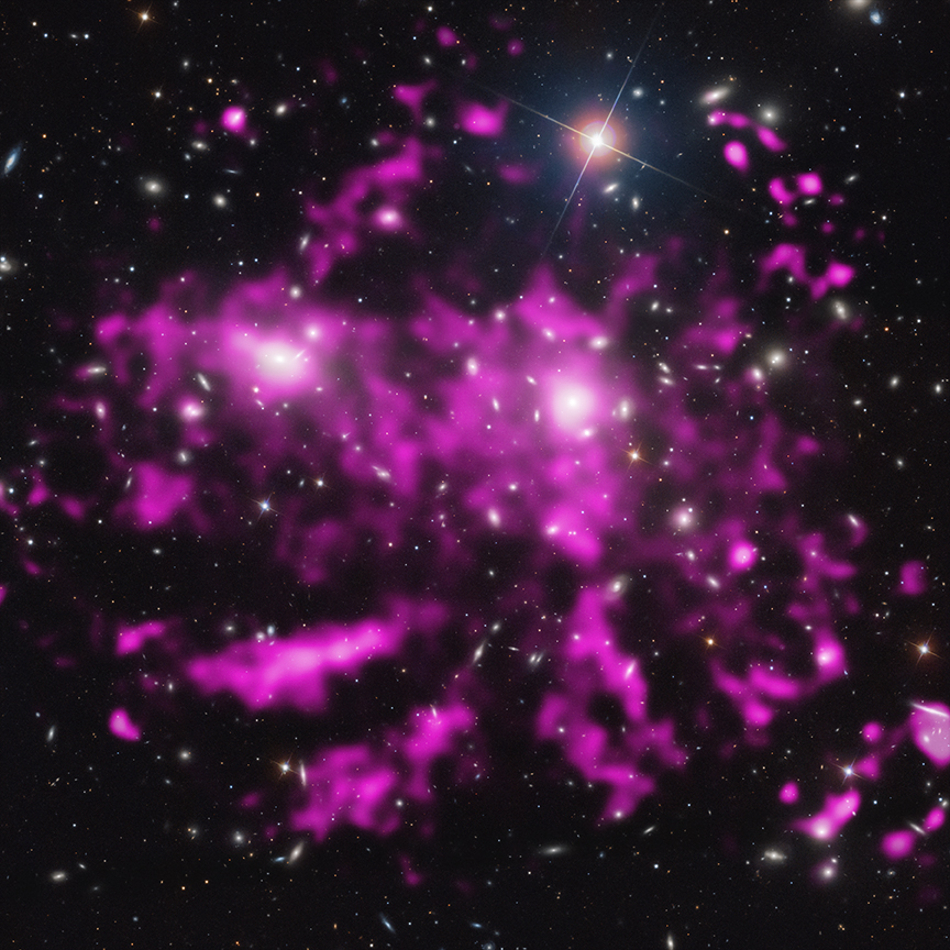
 Credit: X-ray: NASA/CXC/MPE/J.Sanders et al, Optical: SDSS
Credit: X-ray: NASA/CXC/MPE/J.Sanders et al, Optical: SDSS
Tresses of Coma
The Universe is made up of clusters of galaxies, and clusters of clusters. These enormous structures are the atoms of the Universe. How these basic building blocks are built is therefore a key astrophysical question. One way that clusters grow and evolve is through mergers, in which a smaller galaxy passing too close to the gravitational well of the cluster gets captured by the cluster, making the gravitational well a little bit deeper. This process leaves behind tell-tale tracks of energetic, X-ray emitting hot gas, so X-ray imagery is a good way to probe the history of galaxy cluster growth. The image above is a composite image of a nearby galaxy cluster called the Coma Cluster, in the constellation Coma Berenices. An optical image from the Sloan Digital Sky Survey shows the individual galaxies which make up the cluster. The purple image reveals X-ray emitting gas seen by the Chandra X-ray Observatory. Hot streamers surrounding the cluster like strands of hair are believed to trace strong collisions produced by the infall of galaxies. These streamers stretch for nearly a million light-years, and are believed to be hundreds of millions of years old. Astronomers are surprised that, though the merger process is presumably a very messy one, the strands are rather smooth, which probably indicates the important role of intergalactic magnetic fields in moderating the merger process.
Published: September 23, 2013
<
HEA Dictionary ● Archive
● Search HEAPOW
● Other Languages
● HEAPOW on Facebook
● Download all Images
● Education ● HEAD
>

Each week the HEASARC
brings you new, exciting and beautiful images from X-ray and Gamma ray
astronomy. Check back each week and be sure to check out the HEAPOW archive!
Page Author: Dr. Michael F. Corcoran
Last modified Monday, 26-Feb-2024 17:34:44 EST


